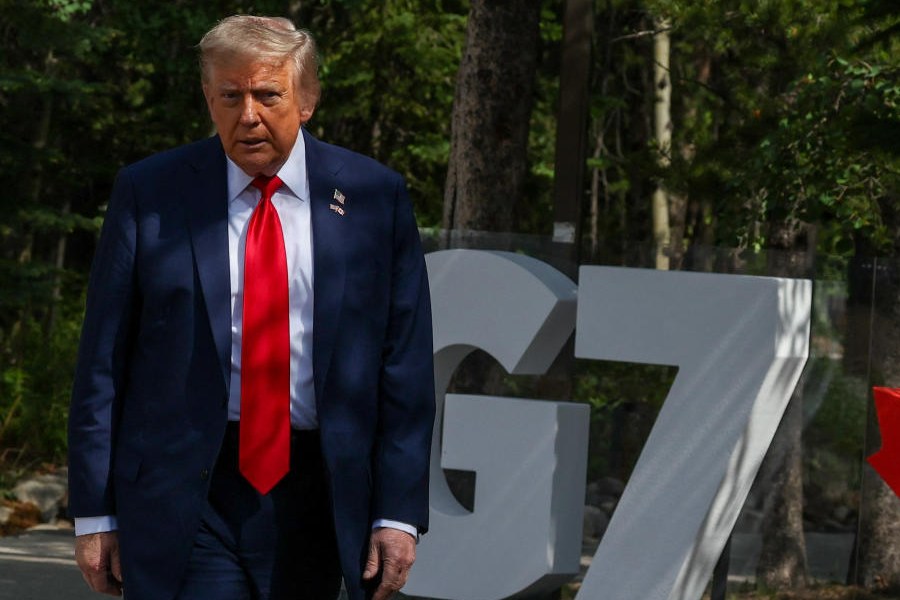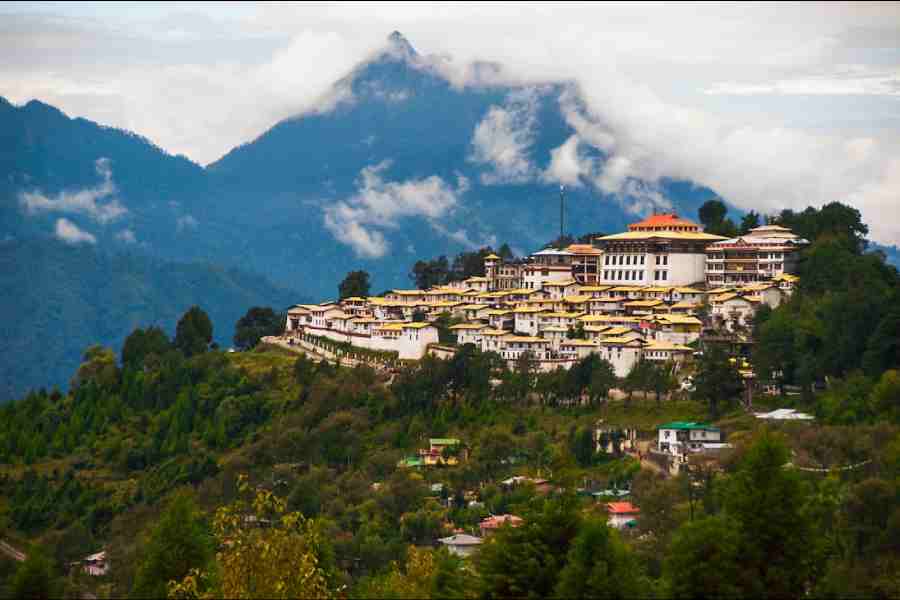 |
| Touch me not |
New Delhi, Aug. 8: British Gas (BG) and Reliance have sent shock waves through the petroleum ministry by seeking a price of $5.11 per million British thermal units (mbtu) for the natural gas from the ONGC-discovered western offshore Tapti gasfields.
This gas was being supplied at a price of $3.11 per mbtu, which is higher than the $2.5 per mbtu that is paid for the natural gas produced from the other ONGC fields.
At the heart of the matter is the production sharing contract that was hastily drawn up in the mid-nineties by the then petroleum minister, Satish Sharma, for handing over these lucrative fields to the Reliance-Enron consortium.
Under the contract, the ceiling on the price of the gas can be raised to $5.5 per mbtu after a period of seven years. BG and Reliance want to take advantage of this clause at a time when international prices of petroleum products are soaring.
The now-disgraced Enron Corporation had made a killing by selling its 30 per cent stake in the Tapti gas fields and the adjoining Panna Mukta oilfields to BG for $350 million. Enron had paid a mere $20 million or so for acquiring this stake from the government. Reliance also holds 30 per cent in the fields, where ONGC’s share was reduced to 40 per cent.
A major controversy was sparked at the time with the Comptroller and Auditor General of India also pointed out that the estimates of the reserves of oil and gas in these fields had been deliberately reduced at the time of the contract to benefit the private companies through a lower valuation. The reserves have, in fact, turned out to be much higher than the estimates used to value the fields.
Both BG and Reliance get market-linked price of $3.11 per mbtu for sales of natural gas from the Tapti fields, which produce around 5 million standard cubic metres per day. However, consumers are charged only $2.5 per mbtu for the gas supplied through the Gail pipeline network. ONGC reimburses the price difference of $0.61 to the private companies from its own funds. This is true for other ONGC-discovered fields, such as the eastern offshore Ravva fields, which were privatised.
ONGC has to shell out around Rs 600 crore every year to ensure that private firms get the market price for their gas. Clearly, if the government allows these companies to raise the price of natural gas, the drain on ONGC resources will increase.
The price that BG and Reliance are asking is even higher than that of imported liquefied natural gas (LNG), which is being sold at $4 million per mbtu by Petronet LNG from its Dahej terminal in Gujarat.
Natural gas prices are a delicate issue as they are used mainly by fertiliser and power companies. While ONGC wants it pegged higher than $2.5 per mbtu, the government has not allowed it as the price of fertiliser and power in the country is also regulated. In fact, National Thermal Power Corporation has been maintaining that any price above $3 per mbtu will render its operations unviable. Similarly, any increase in the price of natural gas for fertiliser units will result in an increase in the subsidy that the government pays these companies.
As a result, both the power and fertiliser ministries have been putting up a strong resistance to increase in price of natural gas.
The Qatar-based Rasgas was forced to reduce the price of LNG for Dahej from $5 per mbtu to $4 because it was not affordable. A lot of hard bargaining went into the exercise after former petroleum minister Vazapathy Ramamurthy settled for a raw deal. Since Petronet LNG is opening up this market for Rasgas it was willing to be flexible on the issue. In order to scale down the price, Petronet has also tightened its belt by lowering the rate of return on the project.










